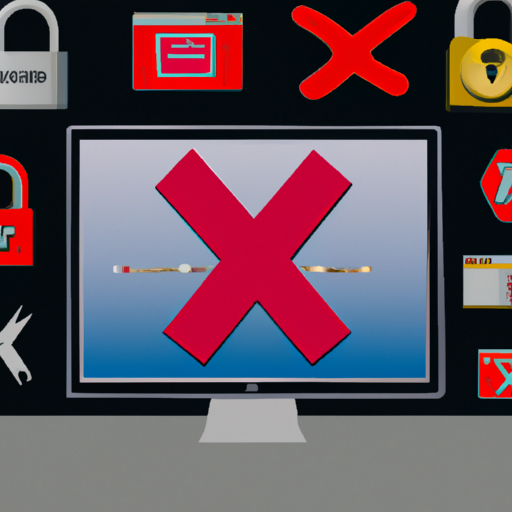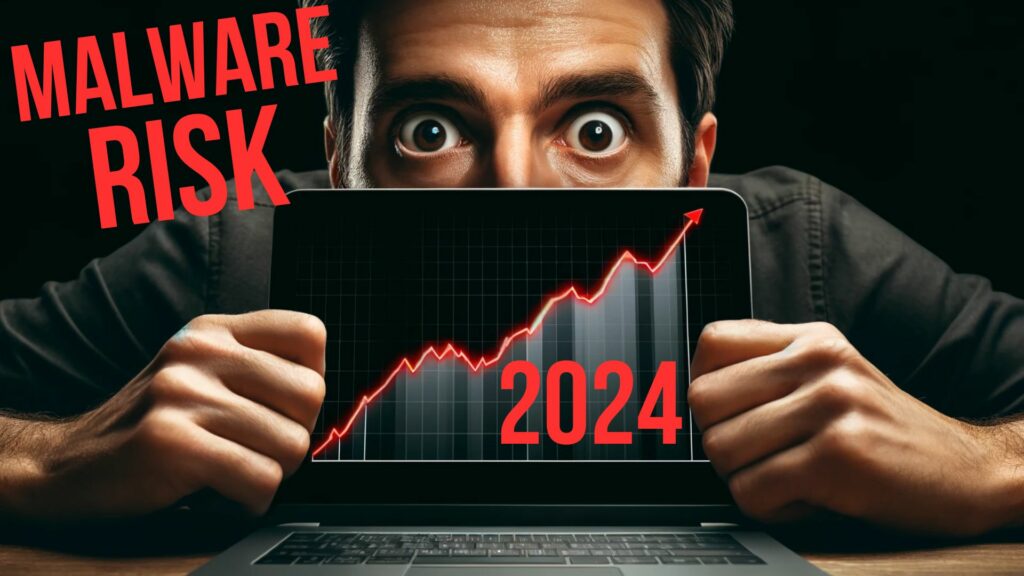Ransomware attacks have been increasing in frequency and severity over recent years, with both individuals and organizations being targeted.
The consequences of ransomware attacks can be devastating for victims. However, it is not always necessary to pay the ransom demanded by attackers.
With proper planning, preparation, and recovery strategies, it is possible to avoid paying ransoms altogether. This article will explore techniques used by cybersecurity professionals to recover from ransomware attacks without making payments to attackers.
Understanding Ransomware Attacks
Ransomware attacks are a growing threat to organizations worldwide.
These types of attacks involve malware that encrypts the victim’s data, rendering it inaccessible until a ransom is paid.
Ransomware prevention measures include regularly updating software and operating systems, implementing strong passwords and two-factor authentication, conducting regular backups, and educating employees on how to identify phishing emails.
However, even with these precautions in place, an organization can still fall victim to a ransomware attack.
In such cases, decryption tools may be available but they vary depending on the type of ransomware used by the attacker.
It is crucial for organizations to have contingency plans in place for recovering from a ransomware attack without paying the ransom.
Preparing For A Ransomware Attack
Preparing for a ransomware attack is essential to avoid paying the ransom.
One of the best practices in preparing for such an event is data backup. It is recommended that organizations regularly back up their critical data and store it on a separate system or cloud server, which can mitigate the impact of ransomware attacks. This practice ensures that if files are encrypted, they can be easily recovered without having to pay the ransom demand.
Additionally, incident response planning should also be included in preparations for a potential ransomware attack. Incident response plans allow organizations to respond quickly and efficiently when faced with an attack, minimizing its impact on business operations.
These measures help protect against future cyber threats and decrease the chances of falling victim to ransomware attacks.
Recovery Techniques For Ransomware Attacks
Recovery Techniques for Ransomware Attacks involve two main strategies: data backup and decryption tools.
The first step in a successful recovery is to ensure that all critical data is backed up regularly, preferably offline or on an external storage device, so that it remains unaffected by the attack. If ransomware attacks do occur, backups can be used to restore affected files and systems. It is important to note that the backups should not be connected to the network at any time during the attack, as this could lead to their encryption as well.
Decryption tools are also useful in restoring encrypted data without paying the ransom. These tools work by identifying patterns in the ransomware’s code and using them to generate a key that can decrypt infected files. However, these tools may not work with every type of ransomware variant out there, making their use limited.
In summary, organizations need to adopt proactive measures such as regular data backups coupled with effective cybersecurity controls such as firewalls and anti-virus software while ensuring they have access to reliable third-party decryption tools when necessary.
Legal And Ethical Considerations
After discussing recovery techniques for ransomware attacks, it is important to consider the moral implications and financial impact of paying a ransom.
While it may seem like the easiest solution, paying a ransom only encourages further attacks and contributes to the growth of the criminal enterprise behind them.
Additionally, there is no guarantee that paying the ransom will result in successful decryption of your data.
The cost of not only the ransom but also potential legal fees or reputation damage can be significant.
It is crucial for organizations to weigh these factors carefully before making any decisions regarding payment.
Furthermore, it is essential to have preventative measures such as strong cybersecurity protocols in place to minimize the likelihood of falling victim to an attack in the first place.
By considering both ethical and financial considerations and taking proactive steps towards prevention, organizations can better protect themselves against ransomware attacks.
Prevention Strategies For Future Attacks
As the threat of ransomware continues to loom over organizations, it is essential to adopt prevention strategies that can mitigate future attacks.
Cybersecurity training for employees should be a top priority to ensure that they are aware of the risks and equipped with the knowledge to identify suspicious emails or links.
Additionally, regular data backups must be performed as an effective defense mechanism against ransomware attacks. This not only ensures that critical data is never lost but also serves as leverage in case of negotiations with attackers.
Implementing these measures reduces the likelihood of successful attacks and empowers organizations to take control of their cybersecurity posture, ultimately safeguarding their assets from potential threats.
Frequently Asked Questions
Can I Negotiate With The Ransomware Attackers To Lower The Ransom Amount?
Ransomware negotiation tactics have been a topic of discussion in the cybersecurity community for several years.
Although some individuals may consider negotiating with ransomware attackers to lower the ransom amount as an effective strategy, it is generally not recommended due to various reasons.
For instance, there is no guarantee that the attacker will adhere to their promises once payment has been made or that they would provide decryption keys after receiving the ransom.
Moreover, paying ransoms can encourage further attacks and fund criminal activities.
Additionally, there are legal consequences of paying ransom such as violating anti-money laundering laws and supporting terrorism financing.
Therefore, organizations should focus on implementing preventative measures rather than relying on reactive strategies like negotiating with attackers.
Is It Ever Recommended To Pay The Ransom In Order To Regain Access To My Files?
When facing a ransomware attack, the question of whether to pay or not is always present.
While some may consider negotiating with the attackers to lower the ransom amount, this approach can be risky and there are no guarantees that it will work.
Moreover, engaging in such negotiations raises ethical implications as it indirectly supports criminal activity.
As cybersecurity analysts and computer security specialists advise against paying ransoms, it is recommended to focus on prevention measures such as regularly backing up data and implementing strong security protocols to avoid falling victim to future attacks.
How Do I Know If My Backup Strategy Is Sufficient To Recover From A Ransomware Attack?
In order to ensure that a backup strategy is sufficient to recover from a ransomware attack, it is necessary to conduct regular backup verification and recovery testing.
Backup verification involves confirming the integrity of backups by checking their consistency with the original data source.
Recovery testing, on the other hand, entails simulating an actual recovery scenario to identify any potential issues or gaps in the backup process.
These practices are essential for minimizing downtime and enabling quick restoration of critical systems and data in case of a ransomware attack.
It is important for organizations to prioritize these measures as part of their overall cybersecurity strategy.
Are There Any Insurance Policies That Can Protect Me From The Financial Loss Of A Ransomware Attack?
Cyber insurance policies have become a popular means of mitigating financial losses resulting from cyber attacks, including ransomware.
These policies provide coverage for various costs associated with recovery efforts such as legal fees and data restoration expenses.
While they may seem like an attractive option for organizations seeking protection against the financial implications of a ransomware attack, it is important to note that these policies are not a replacement for prevention measures.
Implementing effective cybersecurity practices, such as regular backups and employee training, can significantly reduce the likelihood of successful ransomware attacks, ultimately making insurance less necessary.
What Steps Should I Take To Ensure That My Employees Are Educated On How To Prevent Ransomware Attacks?
Employee training is a crucial component in preventing ransomware attacks. It is essential to educate employees on the risks associated with opening suspicious emails, clicking on unknown links, and downloading unverified software.
Prevention measures include implementing strong security protocols, such as multi-factor authentication and regular data backups. Employees should be trained regularly on these practices and made aware of any new threats that emerge.
Additionally, organizations should have incident response plans in place to minimize damage in case of an attack. By prioritizing employee education and prevention measures, organizations can reduce their vulnerability to ransomware attacks and protect themselves against financial loss and reputational damage.
Conclusion
Ransomware attacks are a growing threat to businesses and individuals alike. It is important to have a strategy in place for recovering from these attacks without paying the ransom demanded by attackers.
Negotiating with attackers may not be an effective solution as they can easily re-infect your system or demand more money later on.
It is recommended that you invest in a robust backup strategy that includes regular backups of critical data stored offsite, ensuring quick recovery after an attack.
Additionally, educating employees about the risks of ransomware and how to prevent it through safe browsing habits and email security practices should be part of any comprehensive cybersecurity plan.
In conclusion, taking proactive steps towards preventing ransomware attacks and having contingency plans in case an attack does occur will go a long way towards protecting yourself against financial losses and business disruptions caused by cybercriminals.



